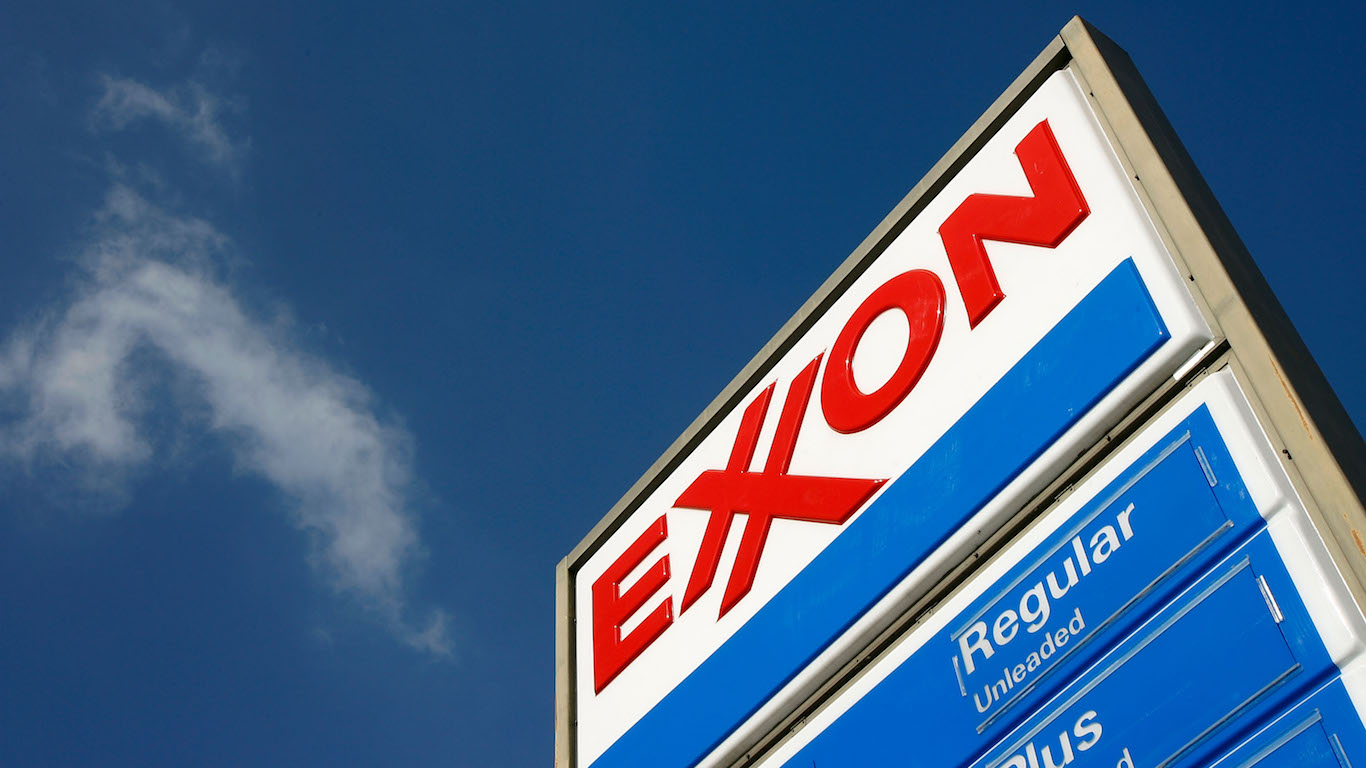
Exxon Mobil Corp. (NYSE: XOM) reported estimated first-quarter 2020 results before markets opened Friday morning. For the quarter, the integrated oil & gas giant posted a diluted earnings per share loss of $0.14 on revenues of $56.16 billion. In the same period a year ago, the company reported earnings per share (EPS) of $0.55 on revenues of $63.62 billion. First-quarter results compare to the consensus estimates for a breakeven quarter with revenues of $51.85 billion.
The quarter’s results included a $2.9 billion charge ($0.67 per share) reflecting non-cash inventory valuation impacts from lower commodity prices and asset impairments. Cash flow from operations totaled $6.3 billion and capital spending totaled $7.1 billion, up 3.7% year over year.
Net income in the quarter dropped by 126% from $2.35 billion a year ago to a net loss of $610 million. Excluding one-time items, net income declined 4% to $0.53 per share
Oil-equivalent production rose by 2% to 4 million barrels a day, reflecting an increase of 7% in liquids production and a 5% decrease in natural gas production.
CEO and chairman Darren Woods said:
COVID-19 has significantly impacted near-term demand, resulting in oversupplied markets and unprecedented pressure on commodity prices and margins. While we manage through these challenging times, we are not losing sight of the long-term fundamentals that drive our business. Economic activity will return, and populations and standards of living will increase, which will in turn drive demand for our products and a recovery of the industry.
Exxon said it is reducing 2020 capital spending by 30% and cash operating expenses by 15%. Capex is now expected to be approximately $23 billion for the year, down from the previously announced guidance of $33 billion.
Earnings in the company’s upstream (exploration & production) group fell by $2.34 billion year over year to $536 million. The decline was due largely to lower prices. Downstream results (refining & marketing) dropped by $355 million year over year to a loss of $611 million. Refining margins dipped to 10-year lows.
Exxon did not provide guidance but in a presentation to accompany its conference call the company said that economic shut-ins and market curtailments related to COVID-19 would reduce daily production by about 400,000 barrels of oil equivalent in the second quarter and the lower natural gas demand in Europe would reduce production by about 100,000 barrels of oil equivalent per day. Refining margins will continue to be pressured and as much as 30% of capacity could be halted.
Analysts are expecting a second-quarter loss per share of $0.56 on revenues of $37.62 billion compared with EPS of $0.61 and revenues of $65.20 billion in the second quarter of 2019. For the full year, analysts are looking for a loss per share of $0.43 on revenues of $194.63 billion.
Exxon paid $3.72 billion in dividends ($0.87 per share) in the first quarter, about 59% of its operating cash flow less operating working capital.
Adjusted to exclude one-time charges, Exxon easily beat analysts’ breakeven estimate. The catch for investors is whether or not a 10% cut in production is going to be enough to lift crude prices. Expectations for the second quarter are muted, at best, and the outlook for the year could be wishful thinking.
Exxon’s shares traded down about 0.6% in Friday’s premarket session at $46.11. The stock’s 52-week range is $30.11 to $78.21. Analysts had a 12-month price target of $47.13 before this morning’s report. The company’s dividend yield is 7.49% at an annualized rate of $3.48 per share.
The #1 Thing to Do Before You Claim Social Security (Sponsor)
Choosing the right (or wrong) time to claim Social Security can dramatically change your retirement. So, before making one of the biggest decisions of your financial life, it’s a smart idea to get an extra set of eyes on your complete financial situation.
A financial advisor can help you decide the right Social Security option for you and your family. Finding a qualified financial advisor doesn’t have to be hard. SmartAsset’s free tool matches you with up to three financial advisors who serve your area, and you can interview your advisor matches at no cost to decide which one is right for you.
Click here to match with up to 3 financial pros who would be excited to help you optimize your Social Security outcomes.
Have questions about retirement or personal finance? Email us at [email protected]!
By emailing your questions to 24/7 Wall St., you agree to have them published anonymously on a673b.bigscoots-temp.com.
By submitting your story, you understand and agree that we may use your story, or versions of it, in all media and platforms, including via third parties.
Thank you for reading! Have some feedback for us?
Contact the 24/7 Wall St. editorial team.



